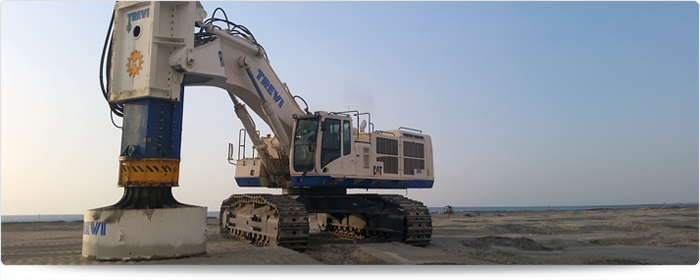
Rapid Dynamic Compaction
Rapid Dynamic Compaction (RDC) is a recently developed soil improvement technique, used for compaction of granular materials up to 5m deep, as alternative to DC method.
The RDC machine consists of a hydraulic excavator base with a strengthened arm to which a compaction hammer is attached.
The compaction energy is generated by the fall of a 12 to 16 Ton hammer, from height of up to 1.2m. The hammer falls on a compaction foot having a diameter ranging from 2.0 to 2.6m, in contact with the ground and the energy is in turn transferred to the ground.
The compaction of the subsoil is initiated by the vibrations generated by the impact of the weight upon the foot, and by the movement of the foot into the ground pushing the material into a denser structure.
RDC technique is well adapted to be used in combination with dynamic compaction and vibro compaction techniques in order to improve the surface soil.
RDC technique generates limited vibrations comparing to dynamic compaction technique and thus can be used close to existing structures.
Key features:
- Applicable for wide range of soils with fines content up to 25%, down to 5m depth
- Very fast production (more than 100,000 sq.m/crane/shift/month)
- Very economical method for fill compaction
- Well adapted to large scale projects
- Increases the bearing capacity of soils, reduces the post-construction settlements and eliminates the risk of soil liquefaction in case of seismic events
- Very sustainable technique: no disposal, no aggregate, no cement, etc.






 Websolute
Websolute